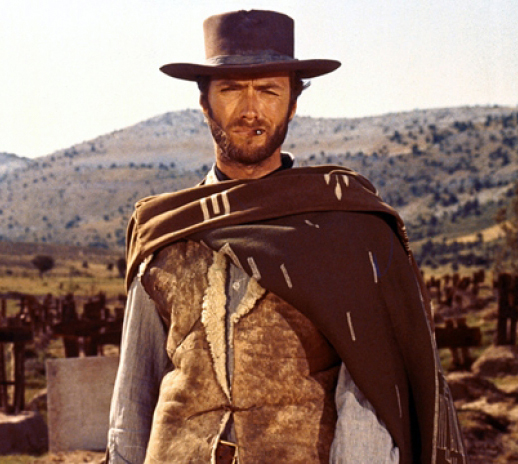The Spaghetti Western is defined as a sub-genre of Western films that emerged in the mid-1960s. Over six hundred films were made between 1960 and 1978. There is one director who not only defined the Spaghetti Western, but created it and whose relatively low budget films have become cinematic classics. The man was Sergio Leone and he showed Hollywood that it was not necessary to throw millions of dollars into a project when you assembled the right talent from the start. The film director, producer and screenwriter was born in Rome on January 3, 1929 and was the son of the cinema pioneer Vincenzo Leone (who was often credited as Roberto Roberti) and silent film actress Edvige Valcarenghi (Bice Waleran).
After watching his father work on film sets, Leone began his own career in the film industry at the age of 18, dropping out of law school to do so. Within months, he landed a job as an assistant to Vittorio de Sica. It was an audacious beginning. The first film that he worked on was “The Bicycle Thief,” which is generally acknowledged as one of the 10 best films of all time. Within a few years, Leone was writing his own screenplays, primarily for ‘sword and sandal’ historical epics that were immensely popular at the time. He also worked as an assistant director on several large-scale international productions shot at the Cinecittà Studios in Rome, notably “Quo Vadis” (1951) and “Ben-Hur” (1959). When director Mario Bonnard became ill during the production of the 1959 epic “The Last Days of Pompeii,” Leone was asked to step in and complete the film. As a result, he was given the opportunity to make his own movie, “The Colossus of Rhodes,” which proved that he could create films whose quality belied their modest budgets.
By the mid-1960s, historical epics had fallen out of favor with audiences and Leone shifted his attention to creating another type of film that could be crafted and produced on a low budget. Although Westerns had been popular in many markets for decades, Leone believed that a different approach would resonate with audiences. The first of these films was “A Fistful of Dollars,” released in 1964. He selected a young television actor named Clint Eastwood to play the role of the man with no name. The film cost $200,000, but ultimately grossed almost $20 million at the international box offices. One of the breakthroughs of the film, a style that still continues to this day, was Leone’s intention to blur the lines between the traditional good guy/bad guy persona. The hero of the film (Eastwood) didn’t wear a white hat and looked as much the part of a villain as the villains themselves. This gritty element brought a realism to Leone’s films that harkened back to his experience as a young assistant on “The Bicycle Thief.” It was classic Italian neorealism set in the Old West and it worked.
Leone’s next two films, “For a Few Dollars More” (1965) and “The Good, the Bad and the Ugly” (1966), completed what has come to be known as the “Man with No Name Trilogy,” with each film being more financially successful than its predecessor. One of Leone’s classmates in school was Ennio Morricone, the award-winning composer who scored many of Leone’s films. The filmmaker worked closely with the composer to create a mood and an immediate connection to the film. The quintessential example is the theme from “The Good, the Bad and the Ugly.” For most, it is impossible to read the title of the film without also hearing the movie’s haunting refrain.
Based on the success of the trilogy, Leone was invited to the United States in 1967 to direct “Once Upon a Time in the West” for Paramount Pictures. The film starred Charles Bronson, Henry Fonda, Jason Robards and Claudia Cardinale. What emerged should have been a classic. With many stylistic references to iconic western films, audience tension is maintained throughout the film by concealing both the hero’s identity and the motivation for his retribution until the final shootout scene. Before its release, it was ruthlessly edited by Paramount, which claimed that Leone’s final cut was an hour too long (it ran a bit less than three hours). This likely hurt the box office results in America, but the movie was a huge success in Europe. It has come to be regarded by many as Leone’s best film.
He continued to make movies through the 1980s, creating what he felt was his masterpiece. “Once Upon a Time in America,” (1984), was a story of greed, friendship, cultural unrest and redemption. The finished four-hour film received a rousing standing ovation at the Cannes Film Festival, but Warner Brothers felt it was too long and cut it down to two hours, essentially destroying the key elements that tied the movie together. Leone never forgave the studio for its butchering of his work and it was to be his last film. Leone died on April 30, 1989 of a heart attack at the age of 60.





